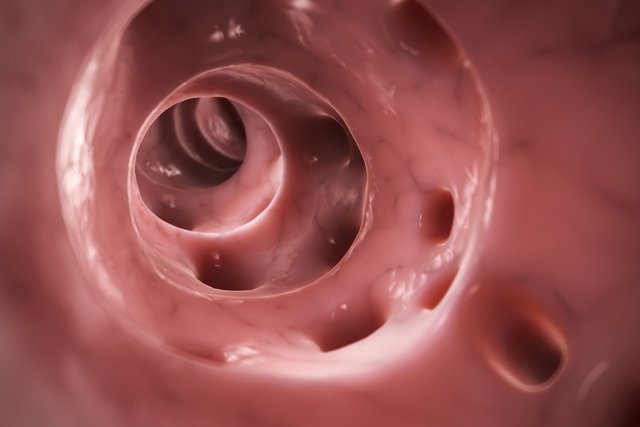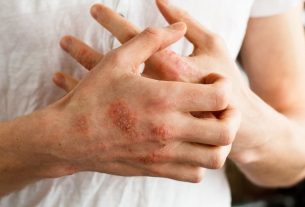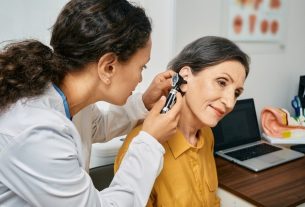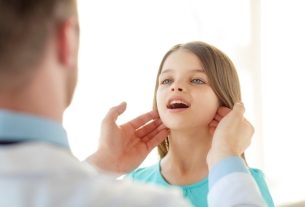The diet for a diverticulitis attack should initially only consist of clear, easily digestible liquids, such as chicken broth, fruit juices, coconut water and gelatin. This type of food helps to calm the intestine, keep it at rest and reduce the formation of feces.
The diverticulitis crisis arises when the colon diverticula, which correspond to abnormal pouches that are formed in the wall of the intestine, can become inflamed or infected, leading to the appearance of some symptoms such as abdominal pain, nausea, vomiting and constipation. Therefore, the foods to be consumed must be easy to digest and low in fiber.
As diverticulitis attacks improve, the diet should also be adapted, moving from liquid to a pureed diet, until it is possible to consume solid foods. From then on, it is important to increase the consumption of foods rich in fiber and water, avoiding the emergence of another crisis.
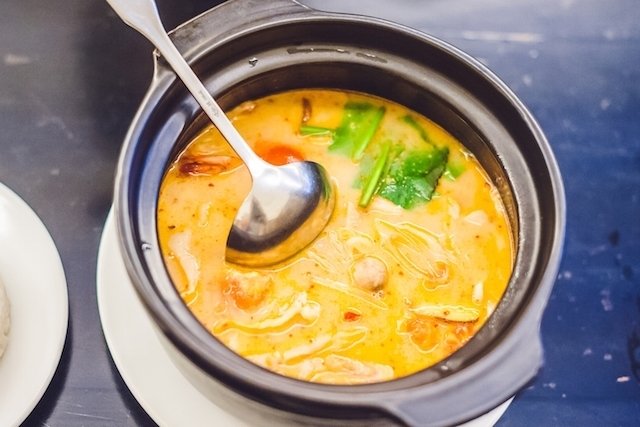
What to eat during the crisis
Initially, the diverticulitis diet should be low in fiber and contain only easily digestible foods. To observe tolerance orally, it is recommended to start the diet with clear liquids, which should include strained fruit juices, in addition to apples, pears and peach. In addition, chicken broth and chamomile or linden tea are also recommended. This type of food must be maintained for approximately 24 hours.
Once the crisis is alleviated, a switch is made to a liquid diet that includes strained fruit juice, strained soup with vegetables (pumpkin, celery, yam), cooked vegetables (zucchini or eggplant) and chicken or turkey. . In addition, dairy-free rice cream, natural yogurt, sugar-free gelatin and chamomile or linden tea can also be consumed. In general, this diet should be maintained for around 24 hours.
As the pain subsides and the intestine works better again, the diet should progress to include foods such as well-cooked white rice, mashed potatoes, pasta, white bread and crackers without fiber and without filling. At this stage, you can also introduce eggs, fish and dairy products, always observing digestion and whether or not there is an increase in gas production. Once the crisis is resolved, you can return to a complete diet that includes fiber and liquid intake.
What should not be consumed
During the crisis, foods capable of causing more inflammation of the diverticula should be avoided and, therefore, the following should not be consumed:
- Sugar and sweet foodssuch as sweets, ice cream and cakes;
- Fibrassuch as raw vegetables, fruit peels, seeds and whole grains;
- Red and processed meatssuch as beef and pork, hamburger and sausage;
- Foods that cause gassuch as vegetables, milk, eggs, nuts, onions, potatoes, asparagus, cheese, broccoli and cabbage;
- Drinkssuch as soft drinks and alcoholic drinks;
- Processed foods and fried foodssuch as ready-to-eat or frozen meals, concentrated soup broth, pizza, snacks, French fries and sauces.
Furthermore, it is important to rest, drink fluids and follow the doctor’s instructions, who may recommend the use of painkillers and antibiotics. Understand how diverticulitis is treated.
What food should be like after the crisis
After a diverticulitis attack, it is important to progressively include foods rich in fiber in your daily life with the aim of not causing gas or abdominal pain, starting with the consumption of a portion of raw fruit and vegetables per day and then progressing to the consumption of wholemeal flour and cereals. Additionally, you should increase your water consumption and drink at least 2 L per day.
Including fiber and drinking water in adequate amounts is important for people who have diverticulitis because it prevents constipation, improving intestinal transit and making stools softer. When feces are compacted in the intestine and take a long time to come out, it can cause the diverticula to become inflamed or infected, leading to other crises.
Furthermore, it is important to consume probiotics, which are foods that contain microorganisms that are beneficial for intestinal health, which is important for people with diverticulitis, as it improves the functioning of the immune system, prevents intestinal inflammation and infection caused by pathogenic bacteria, preventing recurrence of diverticulitis crisis. Learn more about probiotics.
Menu during diverticulitis crisis
The following table shows an example menu for 4 days with foods that calm the intestines during a diverticulitis attack.
The quantities included in the menu vary according to age, gender, physical activity and whether or not you have any associated illness, so the ideal is to seek guidance from a nutritionist so that a complete assessment can be carried out and a nutritional plan can be drawn up accordingly. your needs.
It is also important to remember that, in some cases, the diverticulitis crisis leads to hospitalization, where the diet will be prescribed by the nutritionist, and it may be necessary for the patient to eat through a vein, so that the intestine can recover more easily from the inflammation.

Sign up for our newsletter and stay up to date with exclusive news
that can transform your routine!
Warning: Undefined array key "title" in /home/storelat/public_html/wp-content/plugins/link-whisper-premium/templates/frontend/related-posts.php on line 12
Warning: Undefined array key "title_tag" in /home/storelat/public_html/wp-content/plugins/link-whisper-premium/templates/frontend/related-posts.php on line 13

